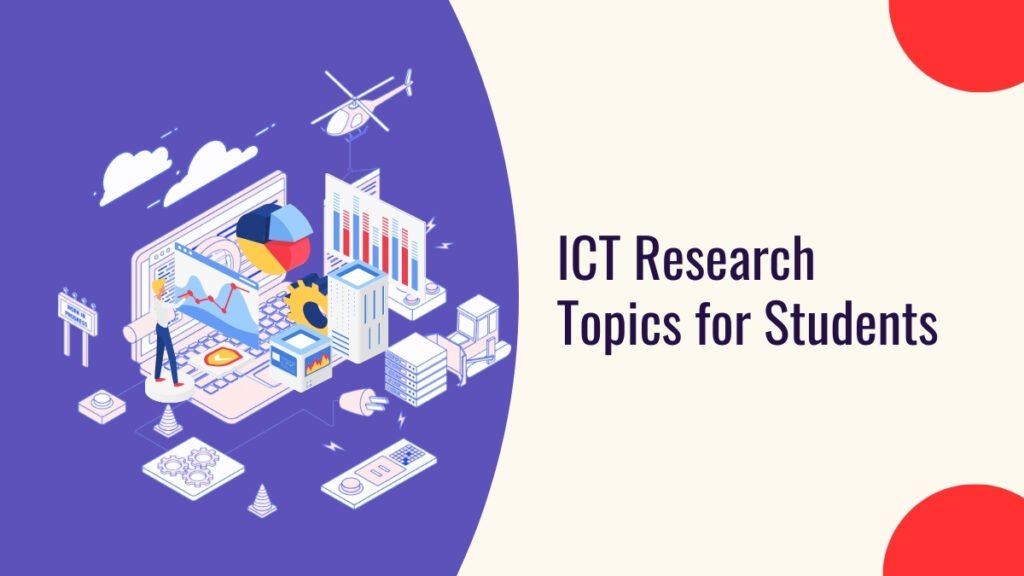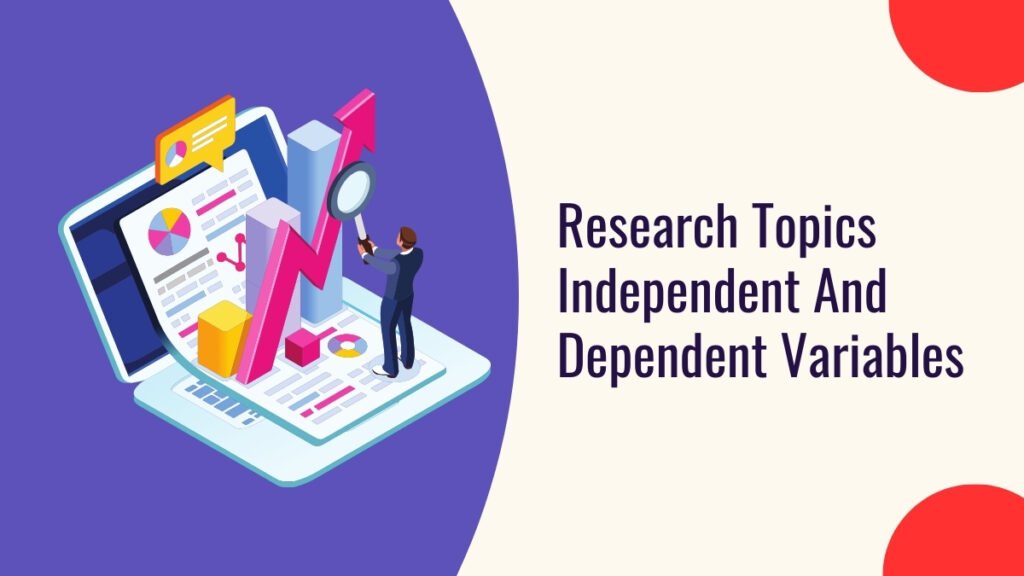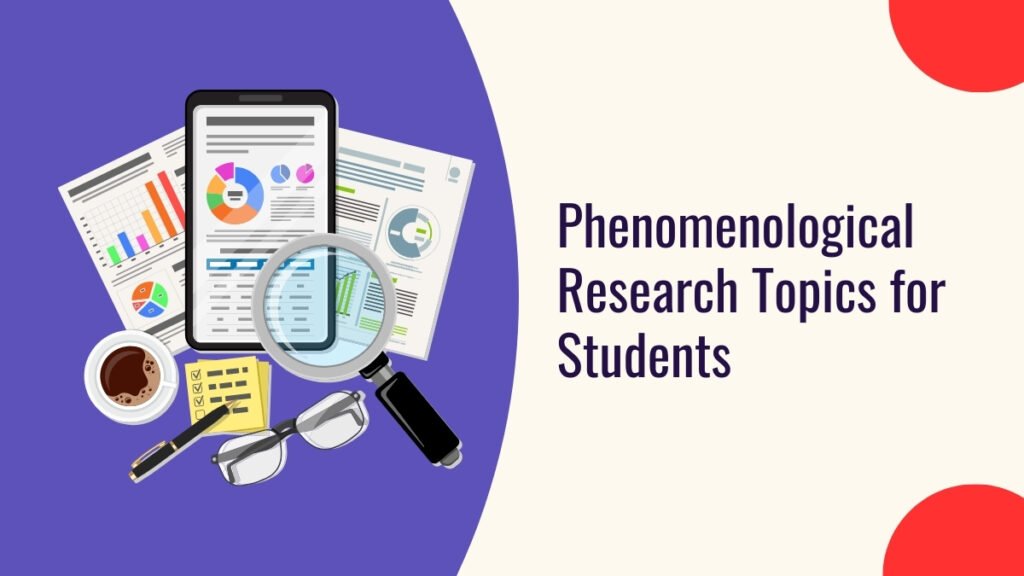Discover engaging ICT research topics for students exploring cybersecurity, artificial intelligence, digital ethics, and more. Explore our curated list and dive into the forefront of technology today!
Hey there! In our tech-driven world, ICT (Information and Communication Technology) is everywhere—from how we connect online to the security of our data. If you’re curious about diving into these areas, ICT research can be super exciting. This guide is packed with cool research ideas that’ll get you thinking about cybersecurity, AI, and more. Ready to explore and maybe even shape the future of tech? Let’s dive in!
ICT Research Topics for Students PDF
Importance of ICT Research in Today’s Digital Age
Check out the importance of ICT research in today’s digital age:-
Fueling Innovation: Driving advancements in AI, cybersecurity, and networks, sparking innovation across sectors.
Addressing Global Challenges: Developing tech solutions for climate, pandemics, enhancing global connectivity.
Enhancing User Experience: Designing intuitive interfaces and apps for better usability.
Securing Digital Spaces: Creating robust cybersecurity measures and ethical data frameworks.
Bridging the Digital Divide: Promoting access, literacy, and inclusive tech solutions worldwide.
Investing in ICT research means investing in a future where technology solves problems and connects us globally.
ICT Research Topics for Students
Check out ICT research topics for students:-
Software Development
- Task Management App with No-code Platform
- Description: Develop a task management application using a no-code platform to enable users to create, assign, and track tasks without requiring traditional programming skills.
- Key Features: Drag-and-drop interface, customizable workflows, real-time updates, integration with popular productivity tools.
- Security in Low-code Platforms
- Description: Investigate and implement security measures within low-code platforms to mitigate risks associated with rapid application development.
- Key Focus Areas: Authentication and authorization, secure data storage, vulnerability assessment, compliance with security standards.
- Quantum Computing and Software Development
- Description: Explore the intersection of quantum computing and software development to harness the potential of quantum algorithms and optimize software performance.
- Potential Applications: Quantum simulation, cryptography, optimization problems.
- Blockchain for Secure Data Management
- Description: Develop a blockchain-based solution for secure data management, ensuring data integrity, transparency, and resistance to tampering.
- Features: Immutable ledger, smart contracts for automated transactions, decentralized storage.
- Addressing Bias in AI Algorithms
- Description: Research and implement strategies to identify and mitigate bias in AI algorithms, ensuring fairness and equity in decision-making processes.
- Techniques: Bias detection algorithms, dataset preprocessing, diversity in training data.
- Healthcare Appointment Scheduling System
- Description: Design and develop an efficient appointment scheduling system for healthcare facilities, optimizing patient scheduling and resource utilization.
- Features: Integration with electronic health records (EHR), patient reminders, real-time availability updates.
- E-commerce Platform with AI Product Recommendations
- Description: Build an e-commerce platform enhanced with AI to provide personalized product recommendations based on user preferences and behavior.
- AI Techniques: Collaborative filtering, content-based filtering, real-time learning algorithms.
- AR-based Virtual Try-on System for Fashion
- Description: Create an augmented reality (AR) application that allows users to virtually try on clothing and accessories before making a purchase.
- Features: AR visualization, size customization, social sharing capabilities.
- IoT Integration for Smart Home Automation
- Description: Develop a system to integrate IoT devices for seamless smart home automation, enhancing convenience and energy efficiency.
- Components: IoT sensors, actuators, central control hub, mobile app interface.
- Real-time Language Translation App
- Description: Build a mobile application using AI for real-time language translation, facilitating communication across different languages.
- Features: Speech-to-text translation, text-to-speech synthesis, offline mode for limited connectivity.
Cybersecurity
- Ransomware Detection System
- Description: Develop a system to detect and mitigate ransomware attacks in real-time, minimizing data loss and operational disruptions.
- Features: Behavioral analysis, anomaly detection, encrypted data protection.
- Social Engineering Awareness Platform
- Description: Build an educational platform to train users on recognizing and defending against social engineering tactics used in cyber attacks.
- Components: Simulated phishing campaigns, interactive modules, progress tracking.
- IoT Device Security Analysis
- Description: Conduct a comprehensive security analysis of IoT devices to identify vulnerabilities and recommend security enhancements.
- Focus Areas: Firmware security, network communication protocols, physical device tampering.
- AI in Cyber Threat Detection
- Description: Implement AI algorithms to enhance cyber threat detection capabilities, enabling proactive defense against sophisticated attacks.
- Techniques: Machine learning models, anomaly detection, threat intelligence integration.
- Privacy Solutions after Data Breaches
- Description: Develop privacy-enhancing solutions to mitigate the impact of data breaches, ensuring compliance with data protection regulations.
- Solutions: Data anonymization, encryption techniques, breach notification systems.
- Blockchain for Secure Transactions
- Description: Utilize blockchain technology to create a secure transaction platform with decentralized verification and immutable records.
- Features: Smart contracts, distributed ledger, transparent transaction history.
- Biometric Authentication System
- Description: Design and implement a biometric authentication system for secure access control, leveraging biometric data like fingerprints or facial recognition.
- Components: Biometric sensors, authentication algorithms, user enrollment process.
- Secure Video Conferencing Platform
- Description: Develop a secure video conferencing platform with end-to-end encryption and robust authentication mechanisms to protect sensitive communications.
- Features: Encryption protocols (e.g., AES-256), secure server infrastructure, participant authentication.
- Network Traffic Analysis Tool
- Description: Create a network traffic analysis tool to monitor and analyze network activity in real-time, identifying potential security threats and performance issues.
- Tools: Packet sniffing, traffic flow analysis, visualization dashboards.
- Cybersecurity Incident Response Plan
- Description: Establish a comprehensive incident response plan outlining procedures to detect, respond to, and recover from cybersecurity incidents effectively.
- Components: Incident escalation matrix, forensics investigation protocols, communication strategies.
Networking
- Software-Defined Networking (SDN) Implementation
- Description: Deploy a software-defined networking infrastructure to centralize network management and enhance flexibility and scalability.
- Technologies: SDN controllers, virtualization, network programmability.
- Impact of 5G on Network Infrastructure
- Description: Study the impact of 5G technology on existing network infrastructure, evaluating performance improvements and scalability challenges.
- Areas of Study: Network latency, bandwidth utilization, IoT connectivity.
- IoT Device Security through Network Segmentation
- Description: Implement network segmentation techniques to secure IoT devices, isolating them from critical network segments to mitigate potential threats.
- Segmentation Strategies: VLANs, firewall rules, access control policies.
- AI for Intelligent Network Management
- Description: Utilize AI algorithms to optimize network management tasks such as routing, traffic prioritization, and resource allocation for improved efficiency.
- AI Applications: Machine learning models for predictive analytics, adaptive network configurations.
- Performance Enhancement of Cloud Applications
- Description: Improve the performance of cloud-based applications through optimization techniques, reducing latency and enhancing user experience.
- Optimization Strategies: Caching mechanisms, content delivery networks (CDNs), auto-scaling solutions.
- Edge Computing Deployment
- Description: Deploy edge computing infrastructure to process data closer to the source, reducing latency and bandwidth usage for time-sensitive applications.
- Edge Devices: Edge servers, IoT gateways, edge computing frameworks.
- Network Automation with Python
- Description: Automate network configuration and management tasks using Python scripts to streamline operations and reduce manual errors.
- Automation Tasks: Configuration backups, device provisioning, network monitoring alerts.
- Virtual Private Network (VPN) Setup and Optimization
- Description: Set up and optimize VPN solutions to provide secure remote access for users while maintaining confidentiality and data integrity.
- VPN Types: Site-to-site VPN, client-to-site VPN, VPN tunneling protocols (e.g., OpenVPN, IPSec).
- Network Traffic Optimization
- Description: Optimize network traffic flow to minimize congestion, improve throughput, and prioritize critical applications using quality of service (QoS) techniques.
- Optimization Tools: Traffic shaping, bandwidth allocation, network traffic analysis.
- Wireless Network Design and Optimization
- Description: Design and optimize wireless network infrastructures to ensure reliable connectivity, coverage, and performance for mobile and IoT devices.
- Design Considerations: Access point placement, channel allocation, interference mitigation techniques.
Artificial Intelligence (AI)
- AI for Medical Diagnosis
- Description: Develop AI-powered diagnostic systems to assist healthcare professionals in interpreting medical imaging scans and identifying potential health conditions.
- Techniques: Deep learning models (e.g., CNNs), image segmentation, disease classification algorithms.
- Personalized Learning Platform using AI
- Description: Create a personalized learning platform that adapts educational content and teaching strategies based on individual student performance and preferences.
- Features: Adaptive learning algorithms, student progress tracking, personalized recommendations.
- Ethical AI Development
- Description: Implement ethical principles into AI algorithms and systems to ensure fairness, transparency, and accountability in decision-making processes.
- Ethical Considerations: Bias mitigation, explainable AI, ethical guidelines implementation.
- AI Chatbot for Customer Support
- Description: Build an AI-powered chatbot to provide instant customer support and assistance, enhancing user experience and operational efficiency.
- Features: Natural language processing (NLP), sentiment analysis, integration with CRM systems.
- Explainable AI for Autonomous Systems
- Description: Develop explainable AI models and algorithms to provide clear rationale and insights into decision-making processes of autonomous systems.
- Techniques: Interpretable machine learning models, model-agnostic explanations, decision visualization.
- AI-driven Predictive Maintenance System
- Description: Create a predictive maintenance system using AI to forecast equipment failures and optimize maintenance schedules, reducing downtime and costs.
- Predictive Models: Predictive analytics, machine learning algorithms, anomaly detection.
- Image Recognition for Wildlife Conservation
- Description: Implement image recognition technology to identify and track wildlife species from camera trap images, aiding conservation efforts and biodiversity monitoring.
- Applications: Species classification, population estimation, habitat monitoring.
- Natural Language Processing (NLP) for Legal Documents
- Description: Develop NLP models and tools to analyze and summarize legal documents, improving efficiency in legal research and document management.
- NLP Tasks: Document classification, entity recognition, contract analysis.
- AI-based Financial Trading System
- Description: Build an AI-driven financial trading system to analyze market trends, make data-driven investment decisions, and optimize trading strategies.
- Trading Strategies: Algorithmic trading, sentiment analysis, real-time data processing.
- AI-powered Energy Management System
- Description: Create an AI-powered system to optimize energy consumption, predict demand patterns, and recommend energy-saving strategies for residential or industrial applications.
- Features: Energy forecasting models, smart grid integration, real-time monitoring.
Human-Computer Interaction (HCI)
- Accessibility Redesign of Government Websites
- Description: Redesign government websites to improve accessibility for users with disabilities, ensuring compliance with accessibility standards (e.g., WCAG).
- Accessibility Features: Screen reader compatibility, keyboard navigation, color contrast adjustments.
- AR-based Interactive Museum Guide
- Description: Develop an augmented reality (AR) application as a museum guide, providing interactive exhibits, historical information, and navigation assistance.
- AR Features: Marker-based AR, location-based services, multimedia content integration.
- Usability Testing of Wearable Devices
- Description: Conduct usability testing sessions to evaluate the user experience (UX) of wearable devices, identifying usability issues and gathering user feedback.
- Testing Methods: Task scenarios, think-aloud protocols, UX metrics analysis.
- Eye-tracking Analysis of Mobile App UI
- Description: Perform eye-tracking studies to analyze user interaction with mobile app interfaces, optimizing UI design for usability and engagement.
- Eye-tracking Tools: Tobii eye trackers, heat maps, gaze plot analysis.
- BCI-based Control Interface for Smart Homes
- Description: Develop a brain-computer interface (BCI) control interface for smart home devices, enabling users to control appliances and systems using brain signals.
- BCI Technologies: EEG sensors, signal processing algorithms, neurofeedback systems.
- Voice User Interface (VUI) Design
- Description: Design and implement a voice user interface (VUI) for applications and devices, enabling hands-free interaction and voice commands.
- VUI Features: Speech recognition, natural language understanding (NLU), voice feedback.
- Gesture Recognition for Virtual Reality
- Description: Implement gesture recognition technology for virtual reality (VR) applications, allowing users to interact intuitively with virtual environments.
- Gesture Sensors: Depth cameras (e.g., Kinect), inertial motion sensors, machine learning models.
- Multimodal Interaction in Educational Apps
- Description: Integrate multimodal interaction capabilities (e.g., voice, gestures, touch) into educational applications to enhance learning experiences and engagement.
- Interaction Techniques: Integration of speech recognition, gesture recognition, and touch interfaces.
- Haptic Feedback Integration in Mobile Games
- Description: Incorporate haptic feedback technology into mobile games to provide tactile sensations and enhance immersion, improving gameplay experiences.
- Haptic Devices: Vibration motors, force feedback actuators, tactile feedback patterns.
- Interactive Dashboard for Data Visualization
- Description: Design and develop an interactive dashboard for data visualization, enabling users to explore and analyze complex datasets through intuitive visual representations.
- Visualization Tools: Charts (e.g., bar charts, pie charts), interactive filters, drill-down capabilities.
Information Systems (IS)
- Cost Optimization of Cloud Infrastructure
- Description: Optimize cloud infrastructure costs by analyzing usage patterns, implementing resource scaling strategies, and leveraging cost-effective service configurations.
- Cost Optimization Techniques: Reserved instances, spot instances, auto-scaling policies.
- Secure Data Migration to the Cloud
- Description: Ensure secure migration of data to cloud environments, implementing encryption, access controls, and auditing mechanisms to protect sensitive information.
- Migration Strategies: Data encryption in transit and at rest, secure data transfer protocols (e.g., HTTPS, SFTP).
- Predictive Analytics for Business Insights
- Description: Develop predictive analytics models to analyze historical data, forecast trends, and provide actionable insights for strategic decision-making.
- Analytical Techniques: Regression analysis, time series forecasting, machine learning algorithms.
- Blockchain-based Supply Chain Management
- Description: Implement a blockchain-based supply chain management system to enhance transparency, traceability, and efficiency across supply chain operations.
- Blockchain Applications: Smart contracts for automated transactions, provenance tracking, supply chain visibility.
- Information Security Framework for Remote Work
- Description: Design and implement an information security framework tailored for remote work environments, addressing cybersecurity risks and ensuring data protection.
- Framework Components: Endpoint security, VPN solutions, remote access policies.
- Enterprise Resource Planning (ERP) System Implementation
- Description: Implement an ERP system to integrate core business processes such as finance, HR, and inventory management, improving operational efficiency.
- ERP Modules: Financial management, human capital management (HCM), supply chain management (SCM).
- Big Data Analytics for Healthcare
- Description: Apply big data analytics techniques to healthcare datasets to derive insights for personalized medicine, patient outcomes analysis, and healthcare management.
- Big Data Tools: Hadoop, Spark, data mining algorithms, healthcare data standards (e.g., HL7).
- Customer Relationship Management (CRM) System Customization
- Description: Customize a CRM system to align with organizational workflows, enhance customer interactions, and improve sales and marketing effectiveness.
- Customization Features: Custom fields and modules, workflow automation, integration with third-party applications.
- Data Warehousing and Business Intelligence
- Description: Design and develop a data warehouse architecture to consolidate and analyze data from multiple sources, enabling robust business intelligence (BI) insights.
- Components: ETL (Extract, Transform, Load) processes, data modeling, OLAP (Online Analytical Processing) cubes.
- Digital Twin Technology for Industrial Applications
- Description: Implement digital twin technology to create virtual replicas of physical assets or systems, enabling predictive maintenance and optimization of industrial processes.
- Applications: Real-time monitoring, simulation of scenarios, IoT sensor integration.
Understanding ICT Research
CT research, or Information and Communication Technologies research, explores how we develop, use, and manage technologies in our digital world. Here’s why it matters:
Focus Areas
- Innovation: Advances in AI, cybersecurity, and networks.
- Social Impact: Effects on people, societies, and the environment.
- User Experience (UX): Designing intuitive interfaces and software.
Why It’s Important
ICT research drives:
- Innovation: Shapes sectors like healthcare and entertainment.
- Solutions: Addresses global challenges like climate change.
- User-Friendly Tech: Makes technology accessible to everyone.
- Security: Protects against cyber threats.
- Digital Inclusion: Promotes access and literacy.
Explore Further
- E-learning and education
- Social media’s impact
- Ethics in AI
- ICT in healthcare
- Future work trends
Understanding ICT research helps advocate for responsible technology use and development.
Importance of ICT Research
ICT research drives innovation by:
- Pushing Boundaries: Advancing AI, quantum computing, and IoT.
- Developing Solutions: Solving real-world challenges in healthcare and education.
- Improving Technologies: Enhancing efficiency and security.
- Shaping Future Technology: Anticipating trends for beneficial technologies.
Role of Students in ICT Research
Students contribute by:
- Engaging in Projects: Conducting research with guidance.
- Exploring Areas: Focusing on cybersecurity and more.
- Contributing to Open-Source: Innovating with global collaboration.
- Presenting at Conferences: Sharing insights and gaining knowledge.
ICT research empowers students to innovate and shape technology’s impact globally.
Choosing the Right ICT Research Topic
Navigating ICT research topics involves these key steps:
Step 1: Identify Your Interests
- Reflect on what intrigues you most in ICT: software development, cybersecurity, or artificial intelligence.
- Stay updated on current trends through industry sources and forums.
- Explore how ICT can address real-world challenges like accessibility or disaster management.
Step 2: Ensure Feasibility
- Focus on a specific topic, like “Ethical implications of bias in facial recognition.”
- Check if you have access to needed resources such as software or data.
- Seek guidance from professors to validate your topic and refine your approach.
Step 3: Craft a Clear Research Question
- Formulate a focused question that addresses a specific problem or gap in knowledge.
- Examples: “How can gamification enhance student engagement in educational apps?” or “What are the best strategies to secure cloud-based healthcare systems?”
Choosing a research topic is iterative. Stay curious, focused, and resourceful to select a topic that fuels your ICT research journey effectively.
Tips for Successful Ict Research Topics for Students
Check out the best tips for successful ICT research topics for students:-
- Follow Your Passion: Choose a topic you’re genuinely interested in, like AI, social media impact, or ethical tech issues. Passion fuels engagement and understanding.
- Scope Consideration: Focus on a specific aspect within ICT that’s manageable yet meaningful. For example, explore “social media’s impact on teen mental health.”
- Research Availability: Ensure plenty of credible sources are accessible for your topic. Use academic journals and expert advice to find reliable information.
- Relevance and Originality: Pick a current and impactful topic within ICT. Aim for a fresh perspective or explore emerging trends.
- Data Feasibility: If your research involves data collection, consider the time and resources needed. Ensure it’s practical to gather necessary data.
- Faculty Guidance: Seek input from professors or advisors on feasible research angles and potential topics.
- Real-World Impact: Consider how your research can address real ICT challenges or contribute to future developments in the field.
- Combine Interests: Merge ICT with other interests, like exploring music streaming’s impact on the music industry.
Following these tips will help you choose a compelling ICT research topic that matches your interests and contributes to the field effectively.
Conclusion
In a nutshell, ICT research topics give students a chance to explore and contribute to technology in exciting ways. Whether it’s software development, cybersecurity, networking, AI, human-computer interaction, or information systems, each area opens doors to learning and innovation.
By picking topics they’re passionate about and using their skills, students can dive deep into discovering new things. Doing ICT research helps sharpen critical thinking and problem-solving skills, setting students up to make a real difference in our digital world today.



